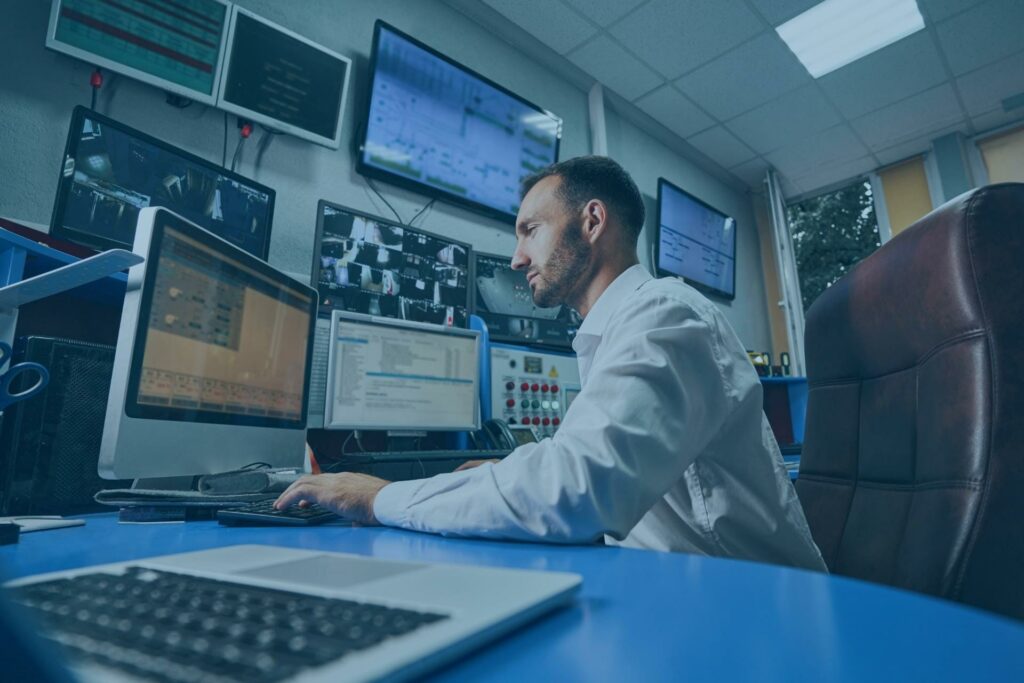Making the Most of the Hybrid Emergency Operations Center

The Emergency Operations Center (EOC) has gone hybrid. In today’s post we’ll look at how to make the most of this increasingly prevalent innovation.
Related on MHA Consulting: After the Smoke Clears: 7 Things to Do Once an Emergency Is Over
There was a time not long ago when an Emergency Operations Center was universally understood to be a physical place. It was a designated, pre-equipped meeting room where the members of an organization’s response team could gather to manage an emergency.
Starting several years ago, EOCs commonly included communications links to allow team members who were traveling to participate remotely. Even then the EOC at most organizations continued to be a well-known, clearly defined physical space.
Over the past two years, a significant shift in our conception of the EOC has taken place.
The COVID-19 pandemic has had the same effect on the EOC as it has on many other aspects of business life: it accelerated its virtualization.
The Contemporary EOC
The EOC of today is not a physical location. It’s a function.
However, the modern EOC is also not exclusively virtual, or at any rate shouldn’t be.
The shift added a new layer and with it powerful new capabilities. But, contrary to popular belief, it has not eliminated the need to have a physical location available where people can gather to manage emergencies. Rather, the contemporary EOC must be a hybrid incorporating virtual and physical aspects.
There’s no doubt that having the ability to move the EOC partly or completely into virtual space brings an organization many benefits. It makes it easier for people to participate. It also increases the chances that all critical members will be present. In addition, it allows the effort to get up and running quickly. It makes it easier for people to balance fulfilling their roles with getting sufficient downtime, a common problem in extended emergencies.
However, conducting EOC activities remotely also brings costs and risks. These include the risk that technical glitches will interrupt communication and impede efficiency. For example, “You’re on mute,” “I can’t hear you,” or “You’re breaking up.” They also include the possibility that staff participating remotely will not give meetings their full attention.
At the same time, there are still many situations when it’s safest and best to have many or all EOC participants gathered in one physical room.
Adapting to the Hybrid EOC
The hybrid EOC is here to stay. It’s not a matter of arguing whether participating in EOC activities remotely or in-person is best. The task for each organization is to get adept at making use of this new resource. The functional EOC that incorporates both remote and in-person elements.
Doing this requires thinking through new problems and devising new policies and procedures.
The following are some issues organizations should take into account as they adapt to the new reality of the hybrid EOC:
- The new model adds capabilities but increases complexity.
- It’s important to ensure all team members have the necessary technology and backups. (What will happen if a remote person loses their internet connection?)
- Company culture will have a lot to do with whether an organization’s natural preference is for mostly in-person or mostly remote EOC meetings. There’s no one right way to arrange things.
- Decisions on how and when to use remote vs. in-person communication should be made ahead of time and written into the emergency operations plan
- The decisions should cover the actions of the primary and secondary people
- Organizations should decide whether the most urgent emergencies automatically trigger the use of in-person meetings
- A fully functional physical EOC should always be ready and available (including “go boxes” with the needed documentation and supplies).
- The organization should consider establishing behavioral expectations for people participating in EOC activities remotely. For example, requiring that people leave their cameras on so their faces are visible or asking them to close their email during meetings.
- It’s important to ensure that everyone is able to access, share, and update documentation or information at a level commensurate with their role.
These are some of the main topics organizations should consider as they integrate the modern hybrid EOC into their emergency operations planning.
Devising Rules for the New Reality
The COVID-19 pandemic jump-started a shift toward the virtualization of the Emergency Operations Center. Today’s EOC is not a place, it’s a function. This shift has added a layer, but it has not taken anything away. Every organization still needs to have a physical place where the members of the EOC team can gather in person.
The main challenge organizations face in adapting to the new reality of the hybrid EOC is determining when and how team members will meet in-person versus remotely and devising policies to forestall the potential negative aspects of remote participation.
Further Reading
For more on emergency operations centers and other topics in BC and IT/disaster recovery, read these recent posts:
- Emergency Operations Centers: What You Need to Know
- After the Smoke Clears: 7 Things to Do Once an Emergency Is Over
- The 6 Tasks Every Emergency Plan Should Address
- How Working from Home During an Emergency Is Different
- “This Is an Emergency”: Why You Should Consider an Emergency Notification System









